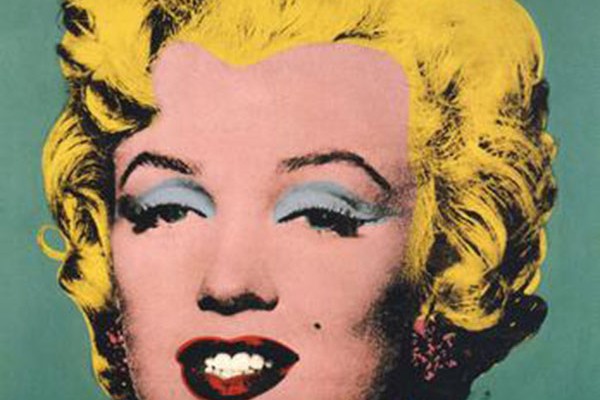The worst sin any artist can commit is to refuse to be bought. In the crude rhetoric of self-interest that dominates contemporary politics, this sin has potentially become blacker still. If you argue, as Rupert Murdoch does, that the market is a transcendent moral force, then any artist who refuses its values exhibits the worst form of moral turpitude. They literally place themselves beyond morality.
‘To succeed,’ Murdoch says, ‘you have to produce something that other people are willing to pay for.’ Artists, through their very existence, challenge that definition of success. By working with no certainty of economic reward, artists demonstrate there are other values and other measures of achievement.
Of course, it’s traditional for artists to be poor. This poverty, morally dubious in itself, is mitigated if it’s ultimately in the service of money. As with Van Gogh, the moral dishevelment of poverty becomes attractive if it creates a work that will later accrue staggering monetary value. It’s acceptable for artists to be spiritual entrepreneurs, venturing their lives on a gamble that they too will triumph in the market, even if only after their death. In fact, as far as the market is concerned, death is a definite advantage.
Artists like to think that art matters for reasons that have nothing to do with its financial value. The market tells them the same thing, since that glimpse of possibility is precisely what makes art so saleable. And artists, like everyone else, have to eat: despite what rubbish is spouted about ‘psychic income’, poverty is a soul-destroying experience. So artists make their truces with capital, some positive and productive, some not so positive. The get-out clause is the art itself: perhaps, even in the all-encompassing, inescapable suffocation of global capitalism, something true and alive will flicker, however briefly, before it’s ground into pap by the cultural machine.
Every now and then the vexed relationship between artists and money boils to the surface, as in the toxic debate that surrounded the Sydney biennale boycott, which protested Transfield Services’ $1.2 billion contract for offshore detention centres.
I don’t intend to canvas the rights and wrongs of the boycott or the issues behind it, although it’s fair to say that much of the public debate has been depressingly ill-informed. The controversy did, however, expose starkly the relationship between art and power. Many statements in the immediate aftermath, particularly the unprecedented ire from federal government ministers, made clear that artists can be as ethical and political as they like, as long as they don’t forget that they are mendicants.
Again and again we heard that artists should demonstrate their ethics only ‘through their art’. This demand highlights the paradox of art’s impotence. The more powerful, moral, angry or challenging an art object is, the more likely it is to accrue value as cultural capital. Permitting defiant art generates status for the elite that is enlightened enough to support it. But what if an artist, having earned this cultural capital, then negates it? Malcolm Turnbull, a notable art patron himself, called it ‘vicious ingratitude’. Others called the action ‘violence’.
By withdrawing their work and returning their commissions, the boycotting artists demonstrated, very publicly, that there are values beyond financial self-interest. They momentarily exposed and challenged the tacit deal between art and power. It seems to me that this, much more than political critique, is their real sin. It also explains an otherwise puzzling anomaly: how refusing money can be condemned as virulently as the artist’s other economic sin – making a living without the justification of a ‘proper job’.
Sometimes the conflict between different kinds of artistic survival – moral and material – has no resolution. The biennale dispute made me think of Mark Rothko’s Seagram murals, which were commissioned by the Four Seasons restaurant in 1958. It was a highly lucrative and prestigious commission: $35,000 for 600 feet of paintings, intended to decorate the Four Seasons’ most exclusive dining room.
Rothko was abrasively left-wing, and intended his art to be subversive. In a conversation with John Fischer, an editor of Harper’s Magazine, he said that he wanted the Seagram paintings to ‘torture’ the diners. He wanted to make ‘something that will ruin the appetite of every son-of-a-bitch who ever eats in that room’. The murals themselves were influenced by Michelangelo’s blank windows in the Laurentian Library in Florence. ‘He achieved just the kind of feeling I’m after,’ said Rothko. ‘He makes the viewers feel that they are trapped in a room where all the doors and windows are bricked up, so that all they can do is butt their heads for ever against the wall.’
Rothko famously rejected the commission in 1959, after he dined at Four Seasons. Ever since, people have speculated why. I think that, as he ate his expensive meal surrounded by people he despised, Rothko recognised his failure. The more powerful his murals, the more they would heroicise the values he hated: in Four Seasons they could never be more than décor. His recourse was to withdraw the work.
The market won anyway. Rothko’s works now sell for tens of millions, making him an exemplary spiritual entrepreneur. Perhaps Rothko foresaw his fate; perhaps that’s a clue to the darkness of his late work. Every honest artist knows that art isn’t enough. Every honest artist nevertheless devotes their life to their work. Whether that matters or not isn’t up to artists, but it sure makes clear what kind of society we’re living in.



